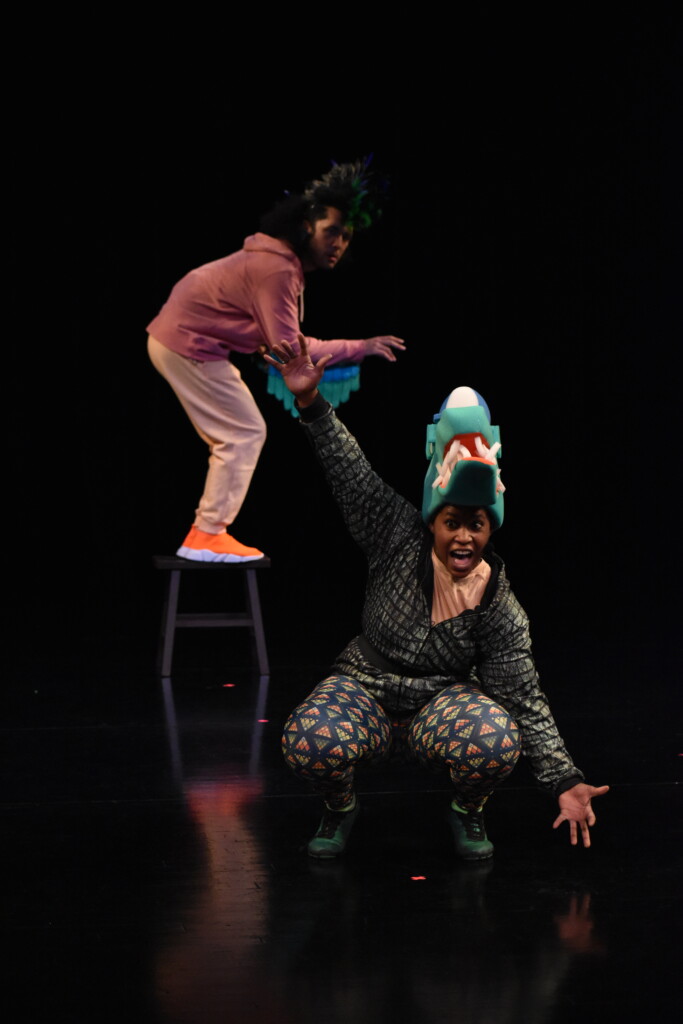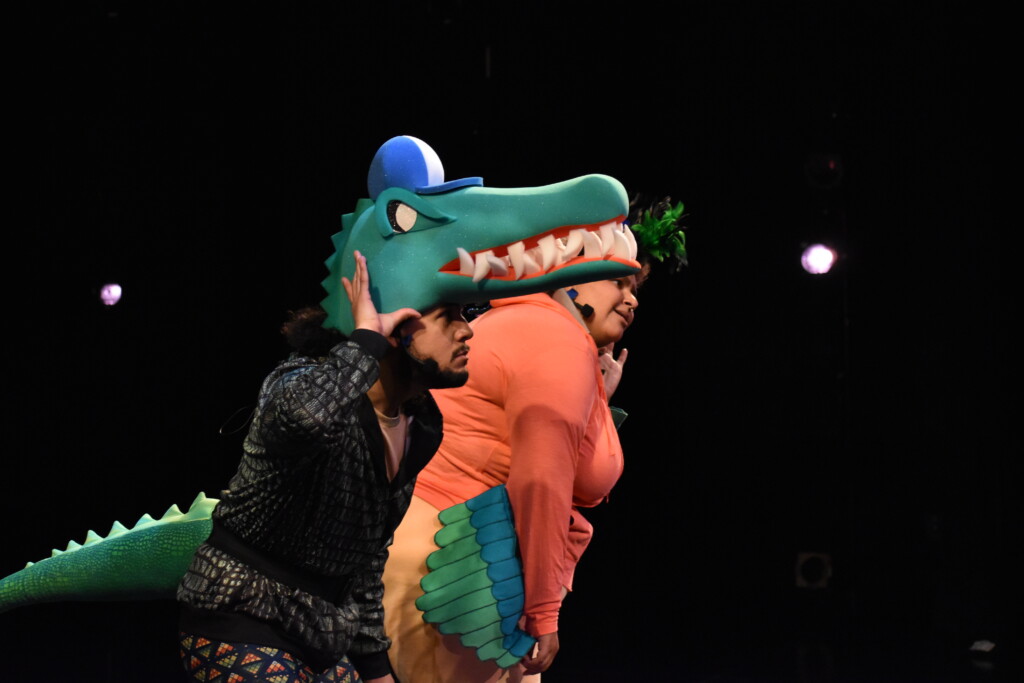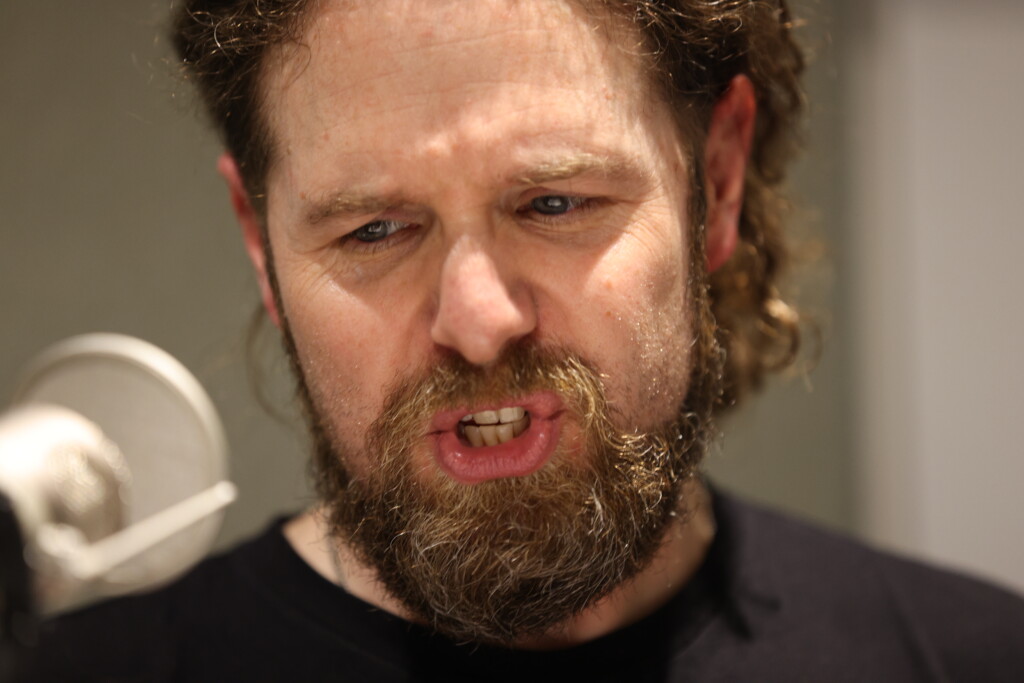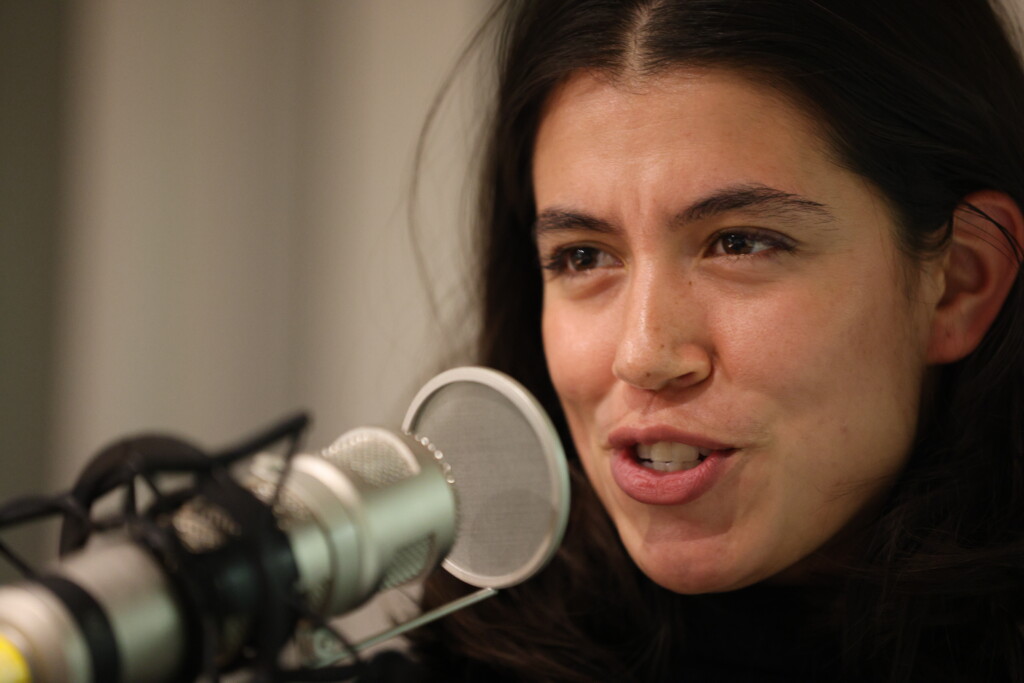RADIO HOUR EPISODE 15: SLEEPY HOLLOW
For Plan-B Theatre’s Radio Hour series, in addition to his original science fiction episodes, playwright Matthew Ivan Bennett has penned outstanding adaptations of Frankenstein, Alice’s Adventures in Wonderland and Sir Arthur Conan Doyle’s only Christmas-themed short story The Blue Carbuncle.
But, his latest adaptation, which premiered last week in a live RadioWest broadcast on KUER-FM, is the best of the lot. Certainly, the three actors — Jay Perry, Isabella Reader and RadioWest host Doug Fabrizio — took great pleasure in rendering the script for Sleepy Hollow. It is based on the Washington Irving original, which has become a Halloween classic despite the story not having any reference whatsoever to the holiday or its customs.
The result was a psychological thriller embodying the vague understanding of hysteria and isolation, which would have been in line with the thinking of the time in which the story is set. Meanwhile, the horror trimmings come through David Evanoff’s magnificent soundtrack and director Cheryl Ann Cluff’s sound design expertise.
Bennett’s adaptations always hew toward the original text. But, as noted in The Utah Review preview, as Irving provided virtually no dialogue in his story and gave just barely a full paragraph to Katrina Van Tassel, a character who emerges as key to the story’s dramatic tension, Bennett took proper liberties.
Despite the tidy proprieties of his schoolmaster veneer, Ichabod Crane finds it more difficult to keep the lid on a past that he finds embarrassing in his efforts to impress and win favor of the townspeople, most notably Kat. As The Chronicler describes, “He’d always been tender about his looks and his mother had not helped. She’d often said about his father: (with Ichabod) ‘The man was uglier than Caliban.’ He knew but two things about his progenitor: he was ugly and was stabbed eleven times. The second fact he’d acquired not from his mother, but the asylum she died in. Until the last rattle of Mary Gibson Crane, she’d insisted the Devil was everywhere in wait and had possessed his father.”
Bennett’s diligence in working with Irving’s language, which he finds beautiful and fascinating, frames Ichabod’s personal demons in a bracing manner that refreshes and revitalizes the original spirit of Irving’s story, which was published in 1820 and is set in 1790. He is intimidated by Kat, not just because she is pretty and rich but she also is an incisive, quick learner who absorbs and synthesizes the books Ichabod has recommended to her. Yet, he also is intimidated by Brom, sensing that his rival’s looks and his status in town will win over the heart of Kat. Ichabod’s somewhat awkward presence in the town seems tenuous. Nevertheless, after hearing Brom tell Old Peg that he had raced the Headless Horseman for a bowl of punch, Ichabod tries to impress with his vocabulary, explaining to Old Peg about his gift for perspicaciousness. It is a small ironic bit of foreshadowing that accentuates the smart choices in this adaptation.
Evanoff’s score adds deliciously sinister riffs of an old Pentecostal hymn, inflected with synthesized growls, scratches and prepared keyboard effects. The music progresses in its dark horror tones, especially in the third and final act of the story, notably during the thrilling chase scene. The breathless pace quickens and the ending returns Irving’s story to its appropriate and genuine standing as America’s first ghost story. Remarkable is that this latest adaptation is as family friendly and enjoyable as the 1949 Disney film version by which generations of readers came to discover the Irving story. With Bennett’s version, though, rereading Irving’s original inspires the reader to rethink the characters.
The episode is now available for free streaming. For more information about the Radio Hour production, see the Plan-B website. This includes information about downloading a free app that also allows listeners to stream the audio for all 15 episodes of the Radio Hour series.
ALLI AND #3: FREE ELEMENTARY SCHOOL TOUR (FEST)
Plan-B Theatre’s Alli and #3, a play by Debora Threedy geared toward Utah students in the K-3 grades, is making its way through schools statewide as part of a yearlong tour, courtesy of the Free Elementary School Tour program (FEST).
But, spectacular late October weather also made for the right backdrop in a pair of free performances of the 25-minute play in the small outdoor amphitheater of Tracy Aviary.
The setting was perfect for the play, which features two characters: Alli, an alligator who turns out to be quite a sharp observer of their surroundings, which are being affected by all sorts of environmental factors including climate, and their new friend, #3, a heron named so because they were the third offspring in their family.
It is a gentle yet realistic narrative about how two animals who have depended upon a familiar marine environment for their sustenance and home realize how climate science is forcing them to relocate and adapt to new surroundings. This odd pair of friends also discovers that they can trust each other and help each other manage unfamiliar habitats and ensure that they have enough to eat and thrive.

The play also opens the door for students interested in quenching their curiosity about the science and biology that make the story of an alligator and heron believable and possible in reality. Following each performance, Tracy Aviary staff were on hand to show some exhibits.
The play surpasses any skepticism or critiques that would suggest the story is motivated or tied to the political framing of climate science. As Threedy explained previously in an interview with The Utah Review, she approached the challenge by answering the question, “How do we introduce a changing world without making it too scary?” She settled on portraying how the river that Alli and #3 depend upon is gradually disappearing. It strikes a gentler balance – an exercise she describes as a “tightrope walking act” — that preserves the seriousness of the issue while not framing the consequences in a way that frightens young minds. Threedy’s research also uncovered that, in fact, alligators and herons had (and have) cohabitated near the Rio Grande.

Depending on the day and location for the school tour, students will see one of the two rotating casts for the production, directed by Jerry Rapier. The first performance featured Pedro Flores (Alli) and Sammee Jackman (#3). Flores brought out the full range of comedic possibilities of Alli, whose accent is highlighted by their pronunciation of the hard “th” sound (“tree” for “three”). James presented #3 as the foil to Ali’s comedy. Meanwhile, in the second performance, the comedic emphases were reversed, with Talia Heiss (Alli) playing more often the role of foil to Benjamin Young (#3). Young’s heron appears in a self-confident strut while Heiss’ alligator is more carefree about snoring and basking in the sun.
The production is available for live stage performances at Utah schools (through May 27, 2022), contingent upon following strict COVID-19 protocols. For more information about the program and for booking information, see the direct Plan-B website link.



